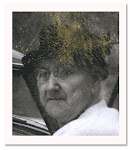Here's a slide from one of my father's many boxes of slides he took during the 1950s through '70s. I've said before that he was a Naval aviator. He flew off carriers and flew seaplanes like the one shown below. The call sign for this plane would have been Sugar Fox 3, and it was in squadron VP-48.
This shot is of a P5M and was most likely taken off the coast of Japan at Iwokuni around 1954. It's believed that only one of these planes still exists. It resides at the National Museum of Naval Aviation in Pensacola, Florida.
The Martin P5M Marlin (P-5 Marlin after 1962), built by the Glenn L. Martin Company of Middle River, Maryland, was a twin engined piston powered flying boat entering service in 1951 and serving into late 1960s in service with the United States Navy for naval patrol. It also served in the U.S. Coast Guard and with the French Navy. 285 were produced overall.Built as evolutionary successor to the PBM Mariner, it had better engines, improved hull form, and more conventional tail. The XP5M Marlin prototypes were based on the last PBM-5 Mariners, the company designation being Model 237. It would be heavily improved again leading to the P5M-2 (Model 237B), which was redesignated SP-5B. A number of P5M-1 models were also used for training, designated TP-5A (after 1962).The Marlin was designed as a gull-winged aircraft to place the engines and propellers high above the spray. Power was by two Wright R-3350 radial engines. The rear hull did not lift sharply from the water at the tail, instead rising up steadily, a Martin innovation; this gave the aircraft a longer base of flotation and reduced "porpoising" over waves.The prototype had nose and tail turrets with twin 20 millimetres (0.79 in) cannon in each, as well as a dorsal turret with two 0.5 in (12.7 mm) M2 Browning machine guns. The cockpit area was the same as the Mariner's. It first flew in 30 May 1948.The first of 167 production P5M-1 aircraft was produced in 1951, flying on 22 June 1951. Changes from the prototype included a raised flight deck for improved visibility, the replacement of the nose turret with a large radome for the AN/APS-44 search radar, the deletion of the dorsal turret, and new, streamlined wing floats. The engine nacelles were lengthened to provide room for weapons bays in the rear.The P5M-1 was followed by 116 P5M-2 planes. These had a T-tail to put the tail surfaces out of the spray, a AN/ASQ-8 MAD boom at the rear of the tail-tip, no tail guns, better crew accommodation and an improved bow to reduce spray during takeoff and landing. (SOURCE: Wikipedia)
My father gets a big smile when he sees this plane. And he still has a model of the one he flew, the only one of his planes I ever was able to see in person. I got to stand on some stairs and look in a door. That was it. I wasn't allowed inside. Let's just say, it was BIG and created an indelible memory.


















Excellent old slide and memory. Thanks, I really enjoyed it.
ReplyDeleteGreat Picture and story - husband was in navy and son pilot in air force so we pay attention to all stuff about planes!
ReplyDeleteAm enjoying the scanner and thanks for your help. marlu
Well then I'll have to drag out some other shots taken by my father. I have a lot of shots of planes. Unfortunately most of our family photos were damaged or destroyed years ago when a water heater broke. Many of my father's old shots from in the Navy became nothing but a gooey mess. Most family photos were ruined with half of the image gone and all ending up like curled potato chips. Fortunately none of the slides were damaged.
ReplyDeleteI flew in a P5M as a crew member in Iwakuni in 1960. It was a very large and unique plane. I maintained the ECM and ASW equipment. As an observer I sat in the hull and experienced several Jet Assisted Take Offs. The galley and Radar were on the second deck while the flight deck was one more deck higher. It was a large flying boat.
ReplyDeleteWhat you describe is what I heard in the stories my father has always told. I'm glad you found the post. You can see more images of seaplanes by clicking on the label beneath the post. There is one which shows a PBM using JATO to take off in San Diego that you might enjoy.
Delete